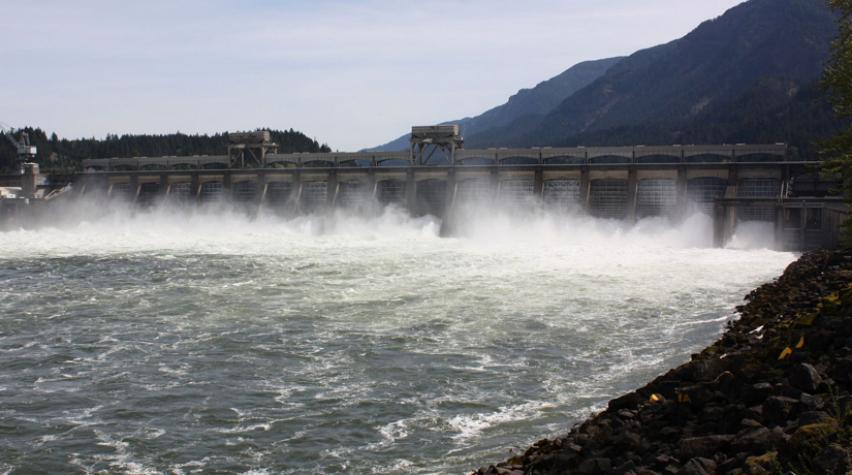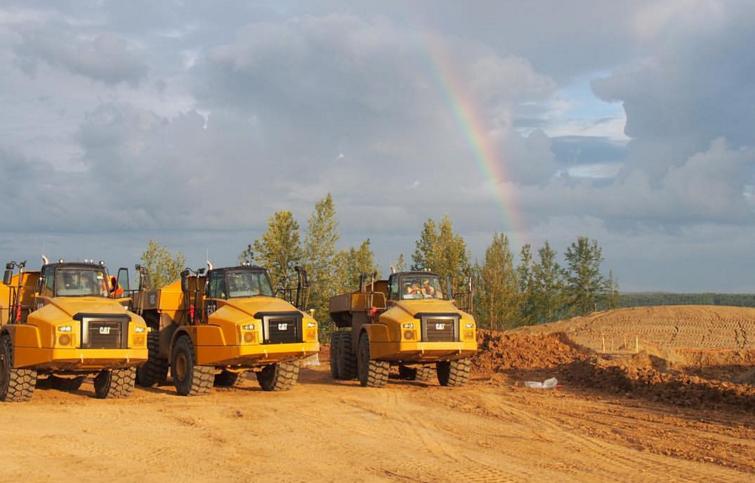
When the Paris climate accord goes into effect in November, the world will have to start living within a tight carbon budget. At this point, without big technological breakthroughs — in carbon sequestration, for example — and a growing political consensus, countries will struggle to reduce emissions enough to keep the world from warming more than 2°C.
Now another problem just dialed up the difficulty even further: There are far more greenhouse gases are going into the atmosphere than previously thought, and politicians who promote hydroelectric power to reduce greenhouse gas emissions just got an abrupt reality check.
Researchers from Washington State University in Vancouver say the world’s reservoirs are an under-counted source of greenhouse gases and produce the equivalent of 1 gigaton of carbon dioxide a year, or 1.3 percent of all greenhouse gases produced by humans. That’s more greenhouse gas production than all of Canada, a tar sands-fueled heavy emitter.
847 large dams on the drawing board
Writing in the journal BioScience, the researchers stressed that reservoirs are also a more potent source of methane than once believed, and governments should reconsider their green imprimaturs.
At a time when as many as 847 large hydroelectric dams are on drawing boards around the world, the impact of new reservoirs "will be greater than previously thought,” John Harrison, a biogeochemist and one of the authors of the paper, told Science magazine.
The new research also revealed a long-ignored glitch in the ratified accord. Although rice paddies and biomass burning are both monitored, reservoir methane emissions, comparable in output, are excluded.
According to a university press release, Harrison just returned from a meeting in Minsk, Belarus, where he lobbied to include them in a 2019 IPCC update.
He explained, "There are inventory compilers in each country that are responsible for compiling information about greenhouse gases. The [United Nations’ Intergovernmental Panel on Climate Change] writes the guidance, and that currently includes reservoirs only as an appendix, not an official part of any nation’s inventory.”
Unfortunately, when the proposed IPCC update kicks in, countries that rely heavily on hydro, such as Brazil and Canada, could see their national greenhouse emissions inventories increased by as much as 7 percent. Tightening the belt will get much harder.
Zeroing in on methane
So in many ways the world has been flying with one eye closed as reservoir methane research played catch-up. It wasn't until 2000 when Vincent St. Louis, a biogeochemist at the University of Alberta, Edmonton, in Canada, broached the new idea that reservoir GHG emissions contributed significantly to global budgets.
Since then there has been a nine-fold increase in studies. This allowed Harrison's group from US, Canada, China, Brazil, and Dutch universities to analyze emission studies from more than 250 reservoirs around the world, making it the largest study to date.
“There’s been a research explosion,” Bridget Deemer, WSU research associate and lead author, told the Washington Post, “We synthesized all known estimates for hydropower and other functions, like flood control and irrigation.”
They had sensed that methane would be important but they were surprised how important. Deemer said, “It’s contributing 79 percent of the total global warming impact of all those gases from reservoirs.” The other two greenhouse gases, carbon dioxide, and nitrous oxide, made up 17 and 4 percent.
The researchers improved the study's accuracy by concentrating on an overlooked variable: bubbles. Some greenhouse gases, including carbon dioxide and nitrous oxide, dissolve in water and then diffuse into the atmosphere. Methane, in contrast, often surfaces in sporadic bubbles. That’s made it hard to get a clear picture of how much of the warming gas—which is 34 times more powerful than carbon dioxide—is rising off a reservoir.
“There’s been a growing sense in the literature that methane bubbles are a really important component of the total emissions,” said Deemer.
They used new tools, like bubble-tracking sonar, to dredge up a lot more methane. On average, studies that included methane bubbles found more than double the amount of the gas coming. Overall, the researchers concluded that each square meter of reservoir surface exhaled 25% more methane into the atmosphere than previously thought.
Vincent St. Louis praised the new study when Science covered it. “Methane's the story, and we need to get a better handle on the methane part of things.”
The focus on methane should help guide decisions about where to put a dam, Harrison said. For example, situating dams on river systems with fewer nutrients to feed algae growth could produce less methane.
A Canadian white elephant

As this study was published, Canadian reserachers and environmentalists were in the midst of a battle to stop construction on the huge Site C dam in British Columbia, which had gotten a greenlight without a CO2 emissions study.
Ironically, the government’s major argument for building the $9 billion dam is that it would provide "clean energy" for more than a century, but, of course, the study completely undermines whether the hydropower can be described as green.
Helen Knott, a member of the Prophet River First Nation and active Site C opponent, pointed out to DesmogCanada that the government’s reason in 2010 for exempting Site C from a BC Utilities Commission review was that it was a green project.
“Actually it is not a green project and this is just one more reason why it should not be built,” said Knott, pointing to myriad other problems with Site C such as questionable economics, opposition by First Nations and loss of agricultural land and food security.
If this dam is completed and flooded, it will create an 83-kilometer long reservoir in an agriculturally rich region of the province. And when you flood 5,500 hectares of prime agricultural land, it's guaranteed to produce vast quantities of methane and other greenhouse gases.
A June 2016 report released by the University of British Columbia found the greenhouse gas impacts of the Site C dam eliminate any possibility of the project's advantage over alternative forms of power production like wind and solar.
Top-level scientists and academics from across Canada sent a “Statement of Concern” that asked the government to submit the project for review by the British Columbia Utilities Commission. It said:
Our research shows that the adverse environmental effects arising from Site C are greater than for any project ever assessed under the history of the Canadian Environmental Assessment Act.
Karen Bakker, Canada research chair in water governance at the University of British Columbia, said Site C is a test of the federal government’s commitment to science-based decision making.
“We truly believe this is a bellwether,” Bakker said. “Will they actually live up to the commitments they have made to evidence-based decision-making with scientific integrity."



Comments
There are a number of things missing from this article that should be examined further. As such, the article draws a conclusion for the reader that MAY be misleading since these facts aren't addressed. For instance, how much equivalent CO2 would be emitted from a power plant of the same size? Also, would the biogenic methane produced by the identified agricultural land be otherwise emitted without the presence of the dam? Overall, it appears this article jumps to a predetermined conclusion: humans are the overwhelming cause of climate change. Without these prejudiced conclusions, would it not be reasonable to conclude that there are many biogenic sources of methane and other GHGs that we don't fully understand and that our self-flagellation via unachievable international agreements and regulatory requirements is both premature and damaging to society?
This wasn't a debate about warming. So I think we're almost saying the same thing. The primary point was that the Paris accord set up a framework with a lot of holes in it. (The exemption for global shipping is huge.) On top of that, politicians are willing to ignore the research before setting up dams, and some emit a lot of GHGs. What makes dams different from surrounding agriculture and woodlands is the ability to produce methane, while the others are more or less carbon sinks. It's the nutrient runoff that ends up behind dams that causes so much trouble. As a matter of fact, there was one study in Brazil where a dam was observed emitting as much or more GHG's than a natural gas power plant. Best, Kent
This wasn't a debate about warming. So I think we're almost saying the same thing. The primary point was that the Paris accord set up a framework with a lot of holes in it. (The exemption for global shipping is huge.) On top of that, politicians are willing to ignore the research before setting up dams, and some emit a lot of GHGs. What makes dams different from surrounding agriculture and woodlands is the ability to produce methane, while the others are more or less carbon sinks. It's the nutrient runoff that ends up behind dams that causes so much trouble. As a matter of fact, there was one study in Brazil where a dam was observed emitting as much or more GHG's than a natural gas power plant. Best, Kent